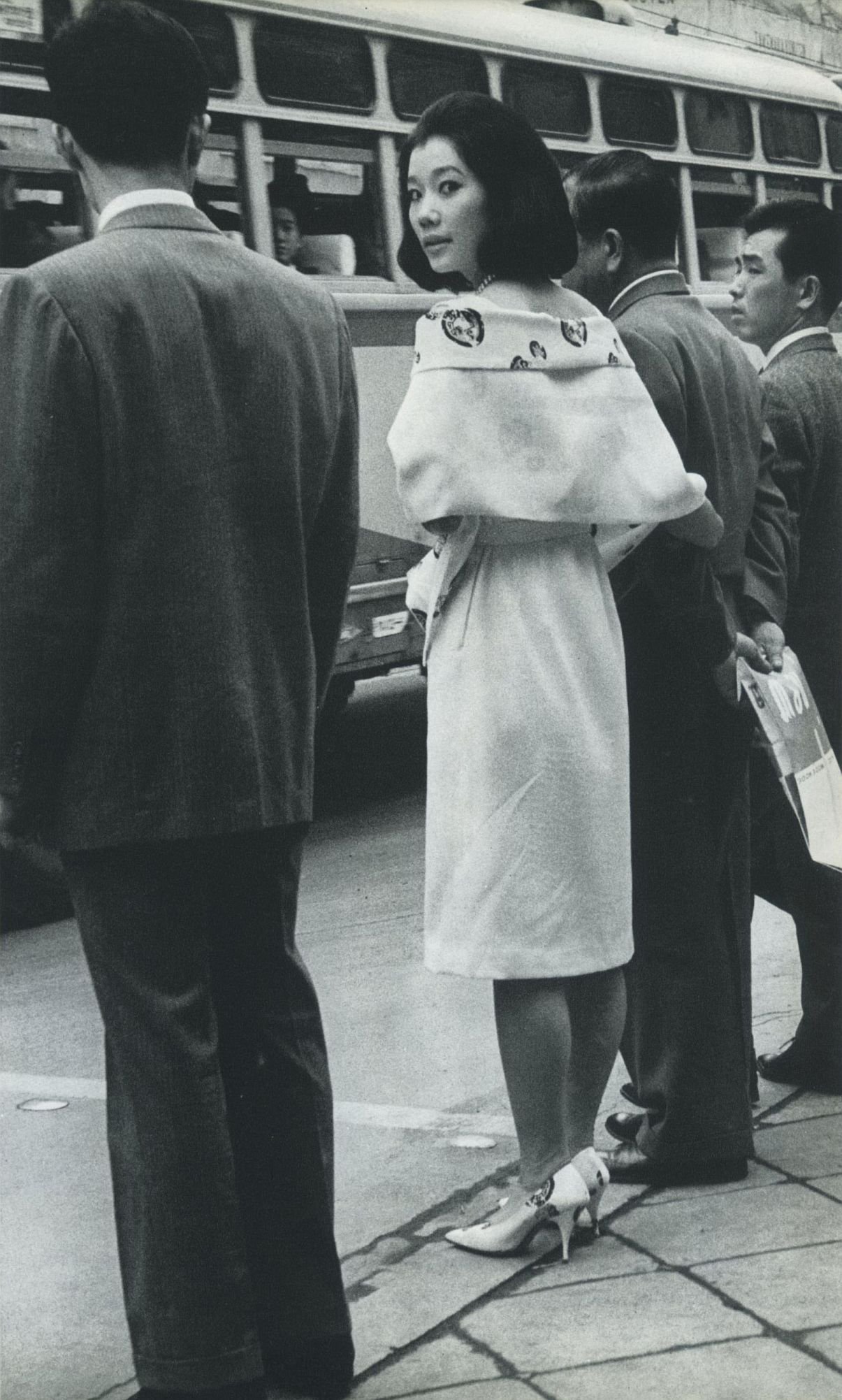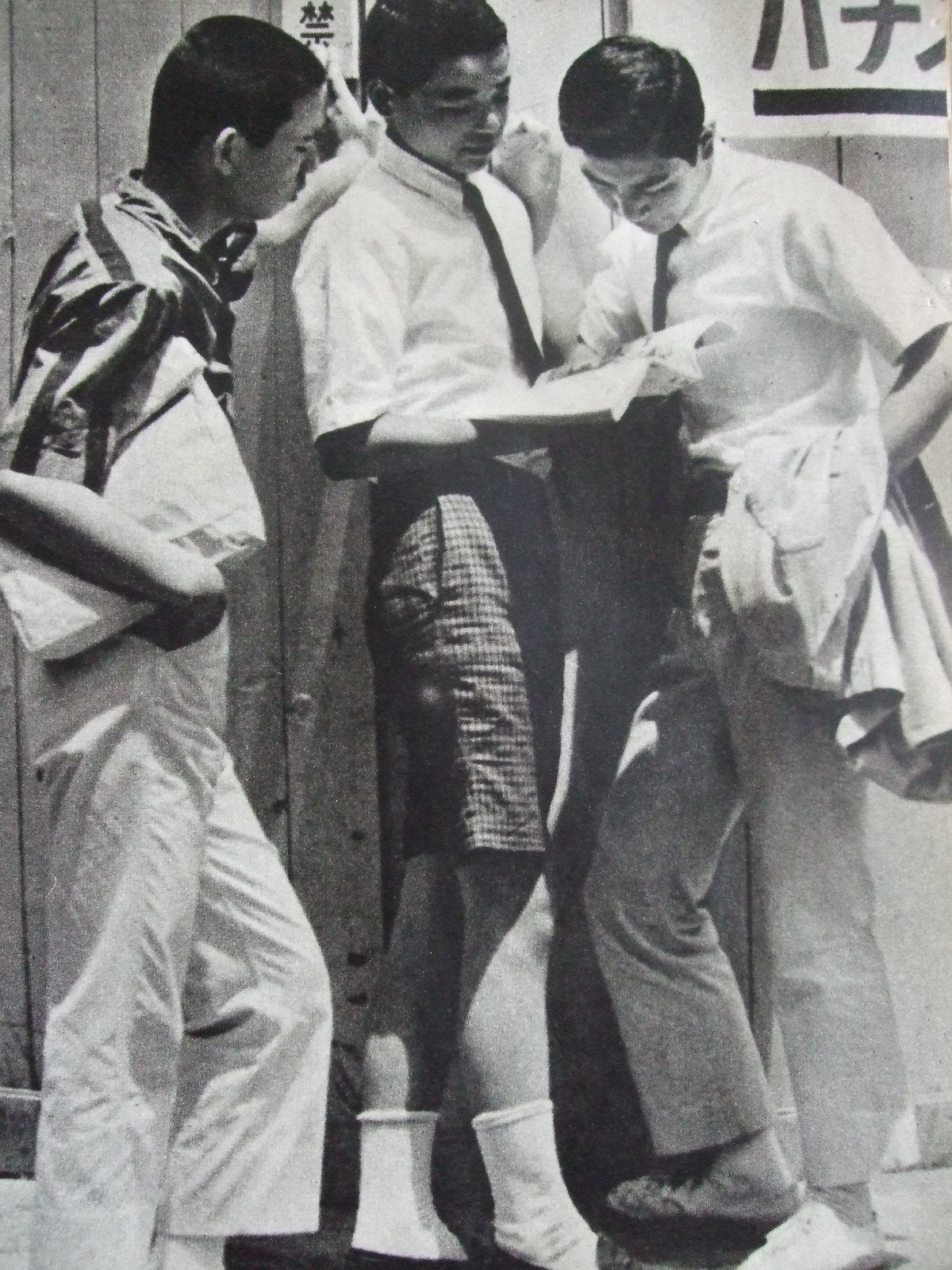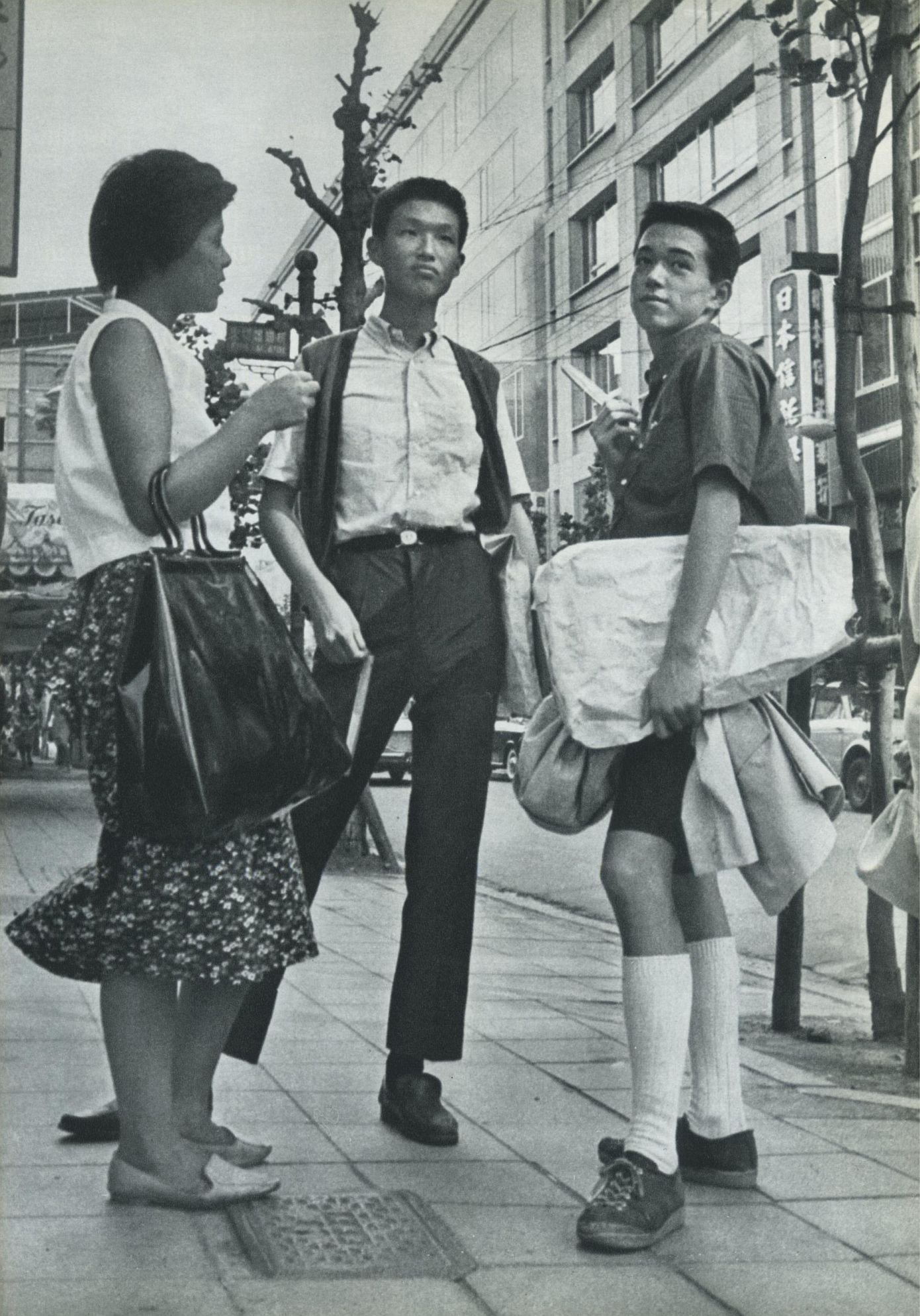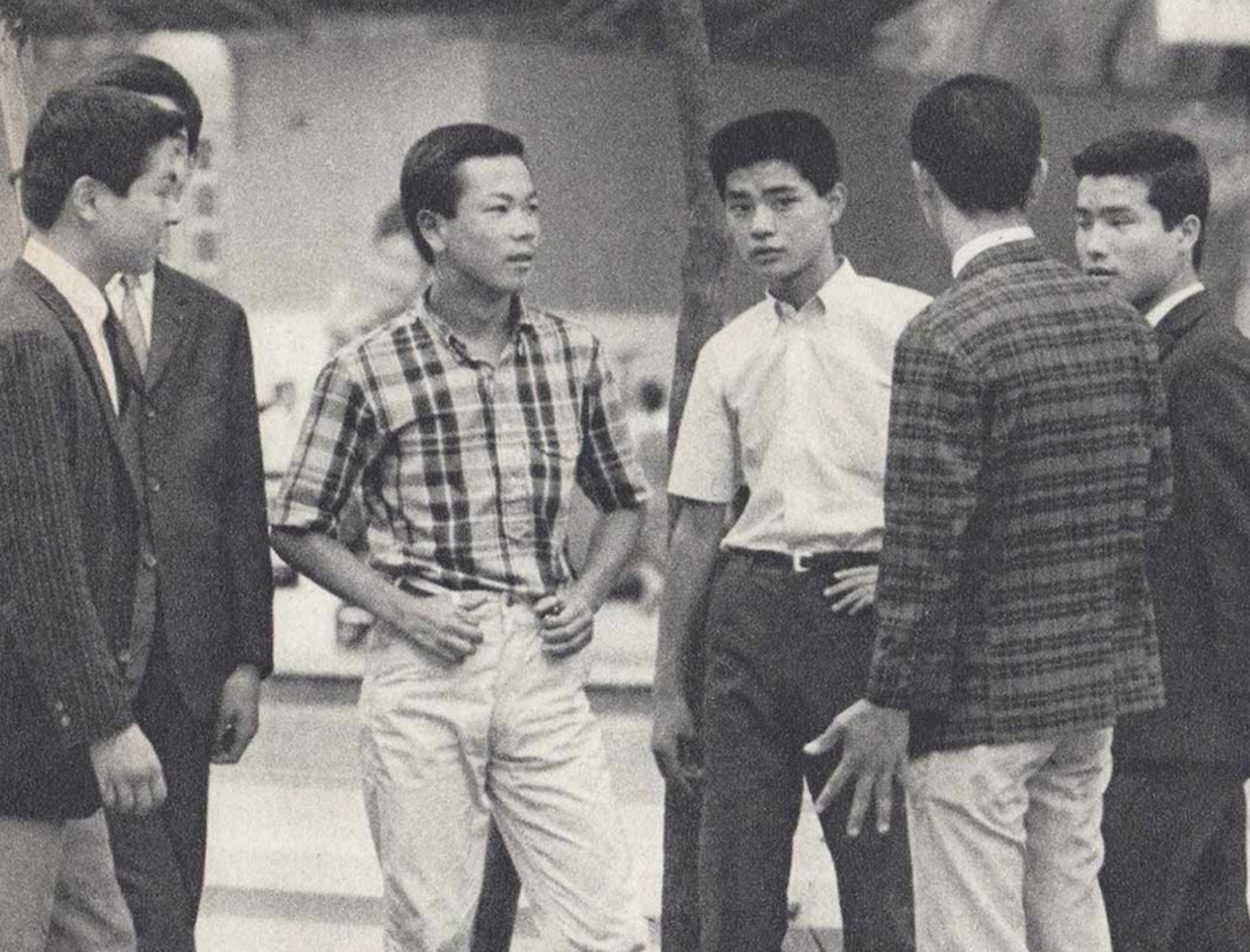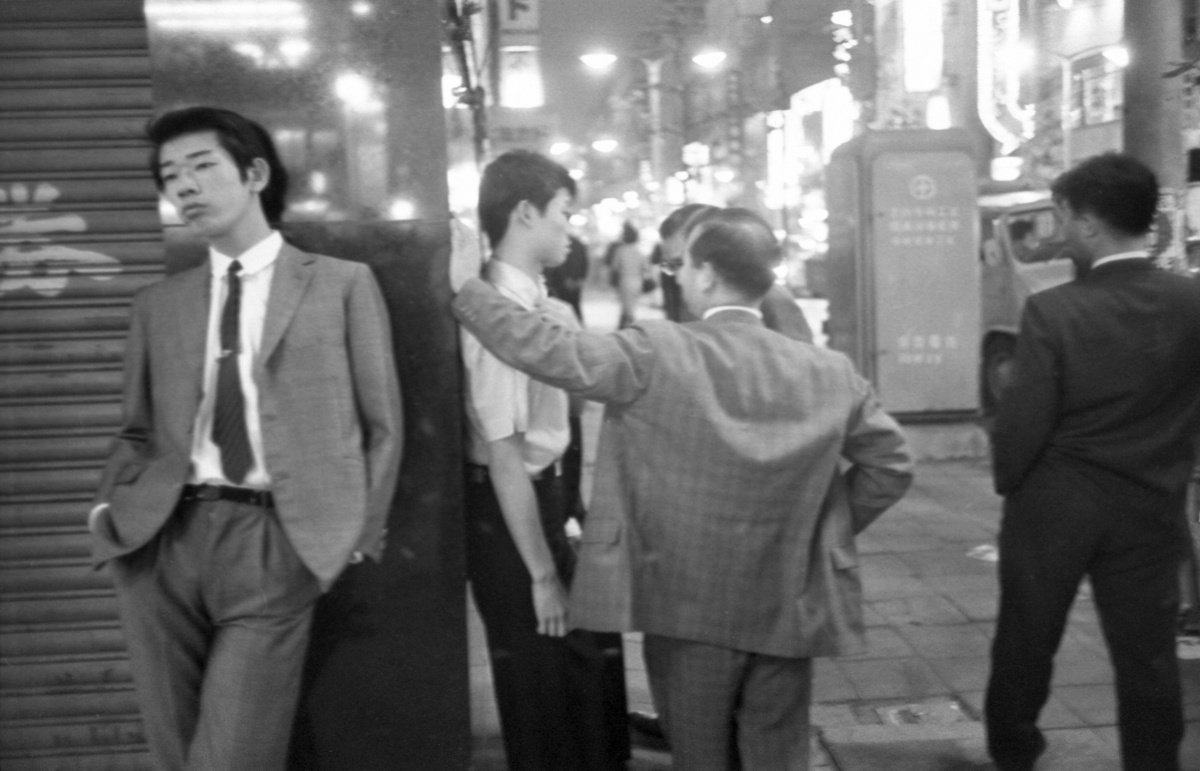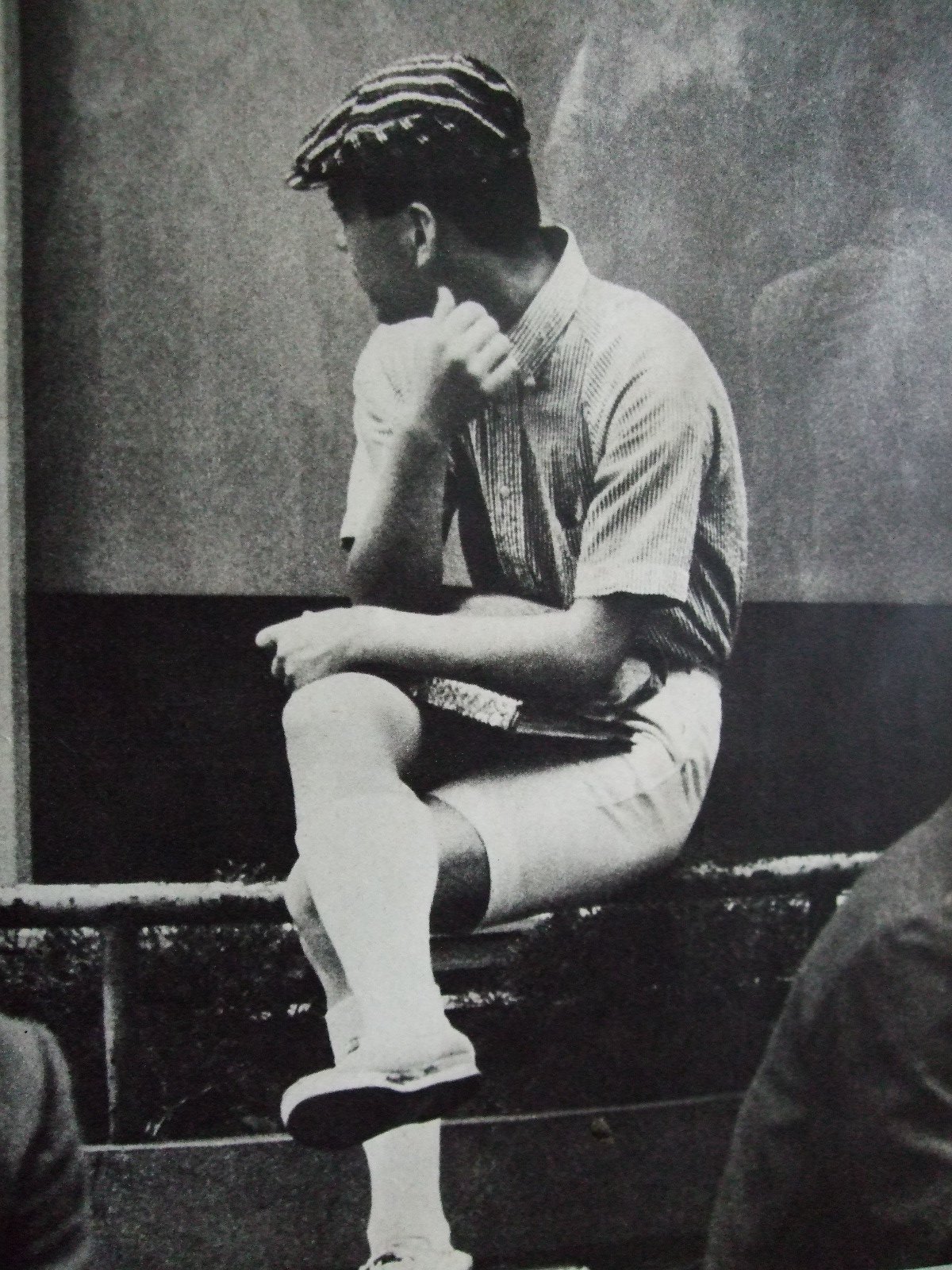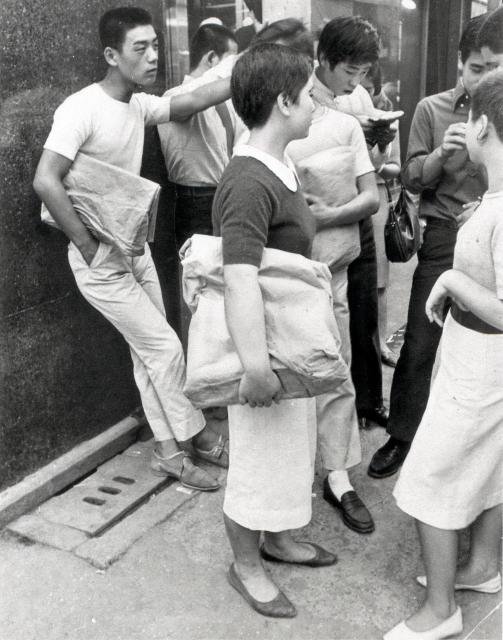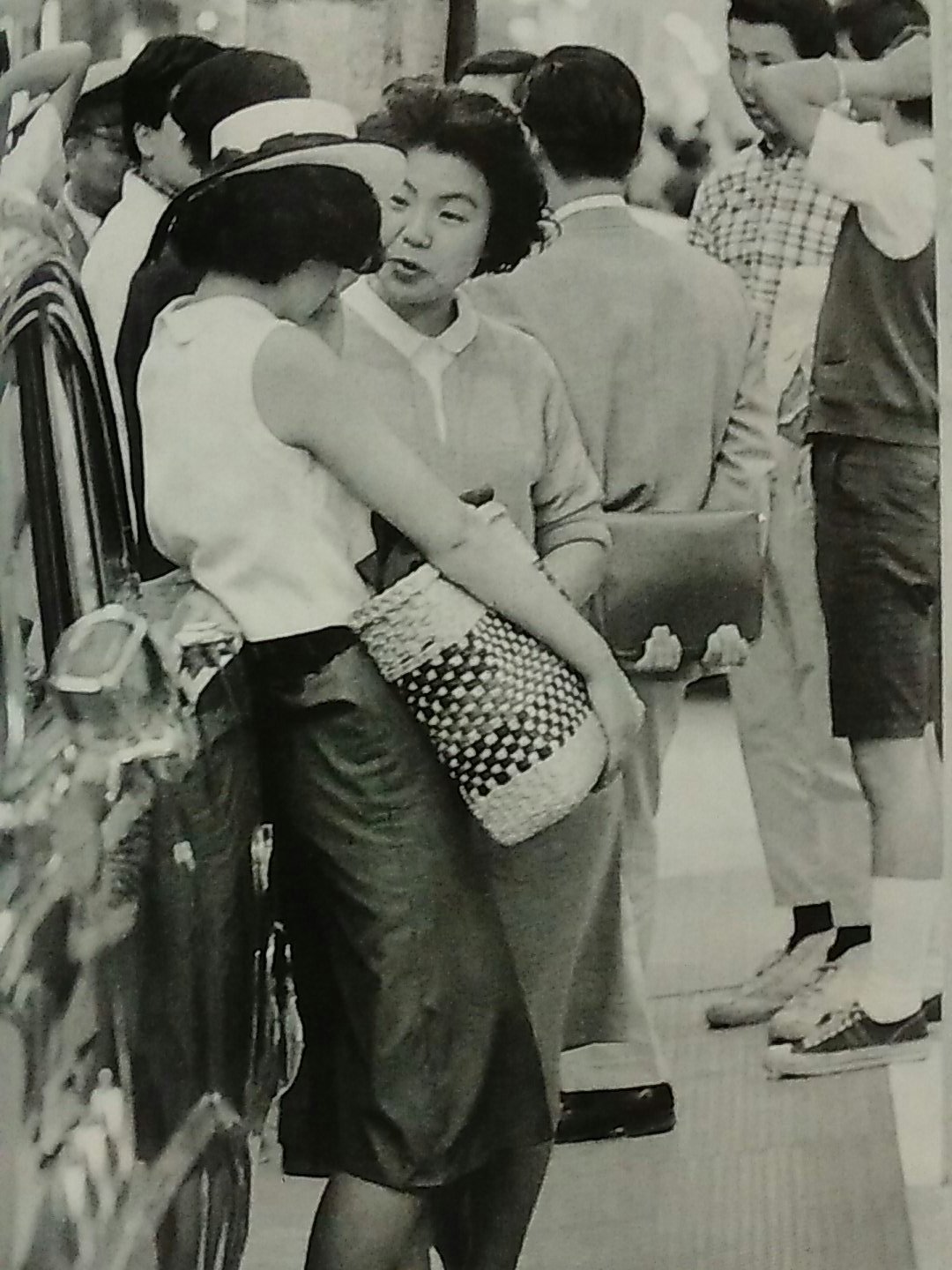MIYUKI-ZOKU: Ginza’s dapper summer of 1964
Miyuki-zoku was a flash in the pan cultural movement that lasted for only one brief summer in 1964. While nowadays, Japanese trends often take on the ~kei suffix (a la ‘visual-kei’), the suffix ‘zoku’, or tribe, was more commonly used between the 1950s and 70s. While a number of ‘zoku’ acted antisocially, the Miyuki tribe consisted of young people who casually gathered around Miyuki-dori in Ginza exploring an alternative self-expression through fashion.
The Miyuki style was a Japanese take on the classic ‘Ivy League’ look. It was in large part influenced by Yujiro and Shintaro Ishihara and their Taiyou-zoku (‘Sun Tribe’) of the late 1950s. Gathering in stylish groups around Miyuki-dori, men were seen wearing collared ‘Ivy’ shirts with Bermuda shorts or cotton pants. It also became a staple to carry a VAN branded paper bag. Girls of the Miyuki-zoku tended to don themselves in white blouses, low heeled shoes, long skirts and headscarves or neckerchiefs. These dapper groups would mill about the Ginza area with no real purpose in mind other than to be seen.
The cultural hub of the Miyuki-zoku became the VAN kissaten in Ginza where large groups would loiter for hours on end. The magazine Heibon Punch also served to popularize the Miyuki style amongst the young Tokyo population. While the Miyuki-zoku were completely harmless, local shopkeepers became disgruntled at what they saw as a hindrance to business. Publications began to spread rumors about the ‘impure sexuality’ of the group and police began to crack down on them as part of the push to prepare a spotless Tokyo for the 1964 Olympics. By early fall of that year, the Miyuki-zoku had largely disappeared under growing pressure. A similar group known as the ‘Ivy-zoku’, based around Shinjuku, saw equal pressure and died out soon after.
The Miyuki/Ivy style has seen some resurrection in Japanese fashion in recent years. However, it feels impossible to top the sheer crispness of the original Miyuki-zoku. Take a look through some photos from that Summer of 1964 above.
